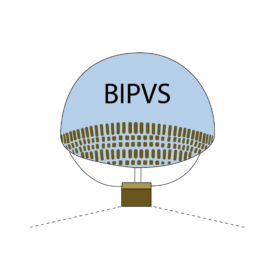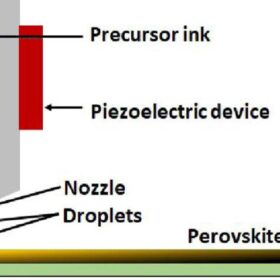Balloon-integrated PV system for emergency power needs at low altitude
Researchers in China have created a balloon-integrated photovoltaic system that reportedly represents a feasible solution for emergency PV power generation in mid-to-high latitudes. It consists of a customized balloon, 19%-efficient thin-film cadmium telluride solar cells, an exhaust valve, control and storage modules, fixed ropes, and a cord reel, as well as an upper hemisphere and a lower arc surface.
Rooftop rollout drives impressive growth for Australian installers
Australia’s record uptake of rooftop solar is delivering significant benefits for some installers, with new analysis by industry consultancy Solar Nerds showing triple-digit percentage point annual growth rates for some companies.
Inkjet printed formamidinium tin-lead perovskite cell with 10.26% efficiency
Researchers from Germany and India have demonstrated an inkjet printing method to fabricate formamidinium tin-lead perovskite solar cells, achieving 10.26% power conversion efficiency and a 1.25 eV energy bandgap.
New algorithm may help mitigate unequal power curtailment
Developed by researchers in South Africa, the proposed technique is based on the water cycle algorithm (WCA), a population-based metaheuristic optimization algorithm that is inspired by the water cycle process in nature and how streams and rivers flow into the sea.
All solar cell efficiencies at a glance – updated
The research group led by Professor Martin Green has published Version 65 of the solar cell efficiency tables. There are 17 new results reported in the new version.
Barcelona testing PV shade canopies
The Barcelona City Council is piloting two solar system prototypes designed to provide shade, generate power, and filter air.
Netherlands deploys 1.76 GW of solar in H1
The Netherlands added 1.76 GW of solar capacity in the first half of 2024, with 148,166 new PV projects. By the end of June, the country’s total installed PV capacity had reached 26.06 GW.
Colombian researchers design agrivoltaic system with hydroponic towers
Colombian researchers have designed an agrivoltaic system integrating hydroponic growing towers. The modular array, consisting of stackable 20 cm rings, creates a structure up to 2.5 meters tall, optimized for cultivating approximately 80 plants per square meter.
Perovskite-silicon tandem solar cell based on indium oxide buffer layer achieves 30.04% efficiency
Researchers in China have fabricated a perovskite-silicon tandem solar cell that utilizes an indium oxide sputtering buffer layer to protect the perovskite absorber and the electron transport layer from potential damages arising from the electrode deposition process. The new layer not only ensured this protection but also showed strong optical and electrical properties.
India on track to hit 132 GW of solar by 2026, says ICRA
ICRA, an Indian credit rating agency, says India could add 22 GW of solar capacity in fiscal 2025 and 27.5 GW in fiscal 2026, pushing the nation’s total installed PV capacity to 131.5 GW by March 2026, up from 82 GW as of March 31, 2024.










